Main menu
Common skin conditions

NEWS
Join DermNet PRO
Read more
Quick links
Author: Dr Diana Purvis, Dermatologist, Starship Hospital, Auckland, New Zealand; Chief Editor: Hon A/Prof Amanda Oakley, Dermatologist, Hamilton, New Zealand, December 2016. Minor update by Ian Coulson, Dermatologist. Copy edited by Gus Mitchell. July 2024.
Introduction
Demographics
Causes
Clinical features
Diagnosis
Differential diagnoses
Treatment
Outcome
Onychopapilloma is a benign neoplasm of the nail matrix. It is usually an isolated lesion affecting one nail. Multiple nail involvement is rare and may be a sign of a BAP1 tumour predisposition syndrome. Rarely malignant onychopapilloma may occur with a histology of Bowen’s disease.
Onychopapiloma is rare. It can affect males and females of all races and ethnicities. It has mainly been described in middle-aged and older adults.
The cause of onychopapilloma is unknown. Multiple polydactylous lesions have been associated with the BAP1 tumour predisposition syndrome. In this situation individuals have a higher risk of multiple Spitz tumours, ocular and cutaneous melanoma, clear cell carcinoma of the kidney and mesothelioma.
Onychopapilloma usually results in a longitudinal streak in a red nail (erythronychia), which extends from the lunula to the tip of the nail.
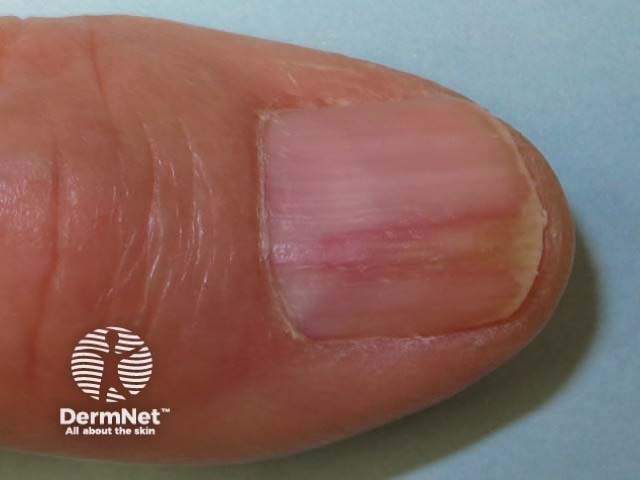
Erythronychia, onycholysis
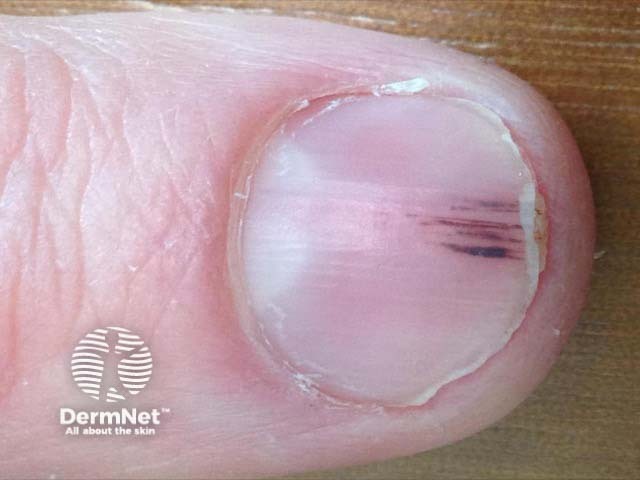
Splinter haemorrhages
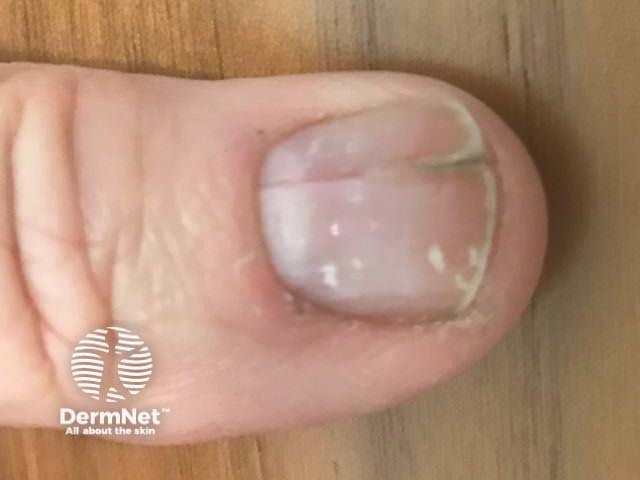
Melanonychia
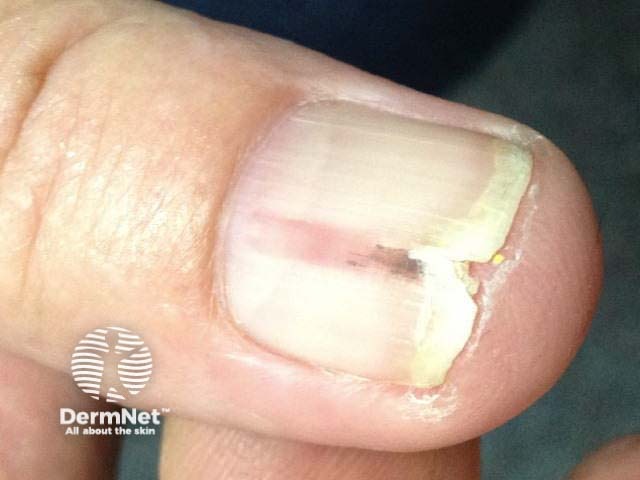
Erythronychia
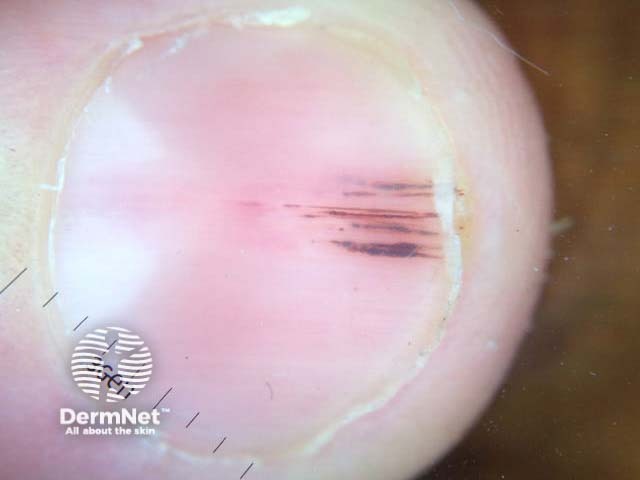
Dermoscopy

Subungual hyperkeratosis
The diagnosis may be suspected clinically, but as malignant lesions under the nail could look similar, it is important to keep the lesion under review and undertake nail biopsy if there is an enlarging lesion.
Histology of a nail clipping showing an area of asymmetrical dyskeratosis and papillomatosis.
Longitudinal biopsy of the nail shows a papillomatous nail bed with layers of hyperkeratosis and an absent granular layer. Pigmentation if present, is due to melanocyte activation.
The differential diagnosis for onychopapilloma includes:
Longitudinal excision of the entire affected nail and proximal nail matrix is curative.
Untreated, the lesion tends to persist.